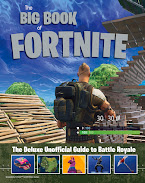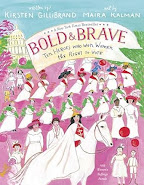"Bad libraries build collections, good libraries build services,
great libraries build communities."
R. David Lankes
Our library learning commons has lots of room to improve our collection, services and sense of community. Building 'a community of learners' is only possible if our library offers strong services to both students and teachers. Improving our reference collection and services will be an important step in strengthening our school learning community.
The Reference Process
"For school librarians, reference services are more than just information skills or activities; these services represent significant and meaningful engagement in a profoundly human activity, ministering to one of the most basic needs of humans-the desire to gain knowledge." (Reidling and Houston, 2019). When I started this journey in becoming a teacher-librarian, I didn't fully understand the depth of the role. The reference process involves a student who needs information, a question, a search for information, an answer, and an evaluation.
Starting out, I was not following up to evaluate if the information was meeting the needs of the student (or teacher). Reference Skills for the School Librarian states "The purpose of reference services is to align information to flow efficiently from reference sources to those who need it." (Reidling and Houston, 2019). In meeting the informational needs of my students, I need to assess that the resources are an appropriate match; reliable, current, at a level the student can understand, and that the information answers the question. The reference process is only possible if the librarian has a deep knowledge of the collection, and is effectively teaching how to locate, evaluate and use information. (Reidling and Houston, 2019). My greatest challenge so far is listening. It sounds trite but when students ask for help I have a library full of students and I am trying to check in and check out books as well as manage student behaviours. I really want to find out what the student needs to tell me, but there are often interruptions. How can I improve upon this? I have made a Reference Interview Checklist for myself and have invited students to return to the library when it is not so busy so I can fully attend to their needs.
| Reference Interview Process |
|
| 1. Open the interview (a need for information) Discover what the student really needs, and keep them informed of the process by: listening, interviewing, searching, and answering |
|
2. Negotiate the question |
|
| 3. Search for information Develop a problem-solving strategy with the student. Where might the best information lie? What sources are most likely to be insightful, reliable, current? Identify and locate resources. |
|
| 4. Communicate the information so the student has an answer, or response Information is sorted, and organized. Are different, additional resources required? Does the student understand the information? Has the student learned 'how to learn?' |
|
| 5. Close the interview with an evaluation Has the need been met? Is the reference process complete? |
|
Analysis of our Reference Sources
Our library Reference Section is located at the back of the library and would be better used if it was located in a more visible area. In my temporary role, I don't feel comfortable moving the section. The shelves are of medium height and accessible by all students. Included in this section are an assortment of atlases and encyclopedias, history books, animal books, dictionaries, thesaurus, art books and pop-up books. There are many duplicates of books and the publication dates, worn covers and faded spine labels reveal that the section is in great need of revitalization. Our reference section does not contain any bibliographies. Our library has many biographies and almanacs shelved in the non-fiction sections in the library, but not in the reference section. There is a collection of fiction books that would normally be published as novels but are published as large 'picture books' in the reference section as well.
Why Our Selection and Services Need to be Improved
The crowded shelves and disorganized nature of our Reference Section make it difficult to find information. The outdated resources are not helpful in meeting student learning needs, and actually make finding accurate resources more timely. This year there has been great demand for non-fiction resources used in report writing for classes from grades 2-7. The grades 2 and 3s requested arctic animal books, and books for Black History Month. The grades 4s have requested Indigenous books and books about the moon, and space. The grade 5-7s have researched governance, simple machines & energy and motion, and countries around the world. Most all of the resources that proved useful to students were non-fiction books shelved by Dewey and online resources. The Reference Section has been accessed to use dictionaries, space books, ancient Egypt (for a report about Egypt) and ancient Greek books (personal learning). The pop-up books are popular with younger students during their library visits but are not viewed for informational needs, however many of them are non-fiction books.
It is my opinion that our reference section in the library is not meeting our school's learning needs, although many of our non-fiction books are. The non-fiction books are newer, more accurate, easier to carry (smaller size) and can be borrowed and taken from the library, where the reference resources cannot. Digital reference resources can be accessed in the computer lab or when students have access to laptops or ipads. Currently we have one student accessible desktop computer for searching the catalogue, that can also be used to search for other resources. Our computer lab connects to the library so having more computers in the library has not been a problem.
How do our reference services measure up? I have strived to meet student and teacher's resource needs through reference interviews. As I mentioned, the resource section did not provide that information needed, but the non-fiction books almost always did. Digital reference resources were very helpful in meeting learner needs, especially for Black History month, country reports, and passion projects.
Step by Step Plan
Improving our reference resources and services is up to me, and I am well under way in my Step by Step Plan. The ongoing changes have been communicated to students during weekly library visits, and to teachers during 'Library Updates' at staff meetings and through biweekly email updates.
|
Improving the Reference Resources Step by Step Plan | Completion Date |
| 1. Remove duplicates, remove MUSTIE books | Completed Feb. 2024 (will be continuous) |
| 2. Make and affix new spine labels to reference materials | Ongoing, will be completed April 30, 2024 |
| 3. Make spine labels and ‘stickers’ for pop-up books | Completed March 2024 |
| 4. Shelve non-reference materials in Fiction section (discard MUSTIE books, or store some in library office) | Will be completed April 30, 2024 |
| 5. Purchase new reference materials (Consideration List is well established) | Ongoing, will be completed May 30, 2024 |
| 6. Formalize Reference Interview process, with form | Completed March 2024 |
| 7. Procedure for documenting use of print reference resources | Ongoing, currently a log book, looking for ideas… |
| 8. Acquire and set up second library desk top computer | April 5, 2024, computer acquired, wiring complete |
|
9. Acquire 2 library ipads for accessing digital resources (I have requested 2 older ipads for library. I have been told I will get them when the new ipads arrive) |
May 15, 2024 |
| 10. Create ‘labels’ for student planners with user name and passwords for BC Digital Classroom and Can-Core (given to teachers as well when demonstrated sites and login at December staff meeting) | Completed December 2023 |
| 11. Create digital resource list for students and teachers | April 5, 2024 |
| 12. Remove old couch, replace with two tables | Completed February 2024 |
The Refreshing Begins: Removing Duplicates and Weeding the MUSTIE Books
 |
| Duplicate Reference Resources |
 |
| Reference book without jacket cover |
 |
| This books was discarded for having no images |
The 2004 encyclopedia set has been removed from the office shelf. I wrapped individual volumes in black paper and have put the books at the ends of shelves so that the shelved books don't get damaged when they are being pulled. The ends of the shelves are inset behind trim from the sliding bulletin boards and the books were getting thrashed.
 |
| 2004 World Book Encyclopedia set |
The log book in the reference section works for tracking the use of reference materials for older students but not younger ones. If I had a cordless wand for checking in books I was thinking I could just scan the books. I will check with other Teacher Librarians to see what they are doing and in the meantime, I just jot notes down when I see resources being used. I was thinking about trying to use old 'check out' cards in some way because I have boxes of them in the library office.
I moved our vast collection of art books to the bottom shelf of the reference resources shelving unit. The books are very large and heavy and the shelf they were on was sagging. Having these large, heavy volumes lower makes them easier to pull out onto the floor to view.
I have been adding new print resources to the Reference Section and have a robust Consideration List. The new picture dictionaries will be most useful to students if they can sign them out, but the new atlas, flag book, and topic specific encyclopedias can be shelved in the reference section.
Mixing some new high interest books in with the older resources in the reference section will help revitalize the section. My secret 'weapons:'
Digital Reference Resources
Reference Resources (username and password required)
District of North Vancouver Library
Reference Resources
CPAWS (Canadian Parks and Wilderness)
Merriam-Webster Dictionary and Thesaurus
Fiction Reading Resources
Reading Rockets (author interviews)
General Resources for Kids
Promoting the Reference Resources
 |
| Salmon books and display |
 |
| Atlas and flag book display |
Part of promoting the reference resources will be encouraging students to explore and use some of the digital resources available. Having another computer set up in the library will enable this because the one computer we do have is used to search the library catalogue. My next steps will include setting up more interactive displays with 'maker' type activities with supporting print and digital resources all together in highly visible areas. I have a Maker Cart of activities all ready to set up and will rotate the hands on materials through displays in the coming months.
Building a 'community of learners' is about connecting people and information. Expanding and promoting our reference resource collection, and improving our library services will provide the essentials for our community to grow and thrive together.
Works Cited
AASL Empowering Learners: Guidelines for School Library Media Programs. American Association of School Librarians, 2017.
Asselin, M., et al. Achieving Information Literacy: Standards for School Library Programs in Canada. The Canadian School Library Association, 2006
Riedling, A. & Houston, C. (2019). Reference skills for the school librarian: Tools and tips, (Fourth Edition). Linworth.
Webliography
District of North Vancouver Library
CPAWS (Canadian Parks and Wilderness)
Merriam-Webster Dictionary and Thesaurus
Reading Rockets (author interviews)




































